
Parker Duofold Centenary Mosaic Mechanical Pencil Limited Edition 2002
A Parker Dufold Centenary Mosaic mechanical pencil. Mosaic Duofold limited production, circa 2002. Barrel and cap made of a composite of different coloured strips of cast acrylic (black, pearl blue, pearl white) with rhodium plated hardware. Comes…
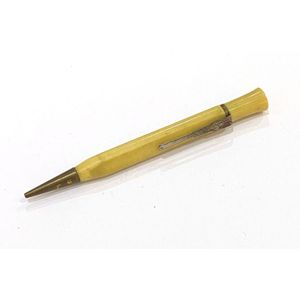
Vintage Fenton Heather Xylonite Propelling Pencil
A vintage Fenton Heather & Pring Pty Ltd, cardboard box makers & Printers Xylonite propelling pencil, length 12 cm
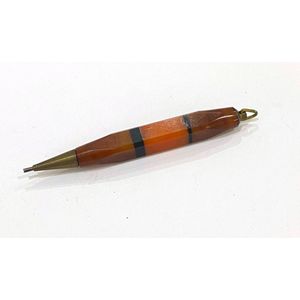
Foreign Carved Agate & Onyx Propelling Pencil - 9cm
A carved agate & onyx propelling pencil, marked foreign, length 9 cm

Vintage Pen & Pencil Set: Conklin & Conway Stewart
Two various vintage pens and a pencil including Conklin & Conway Stewart
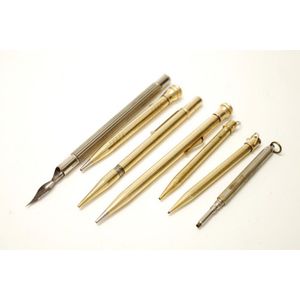
Vintage Eversharp and Dupont Pens and Pencils Set
Seven various vintage pens and pencils including Eversharp and Dupoint
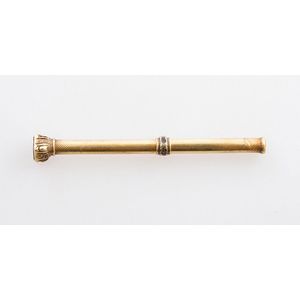
Hardstone Seal Propelling Pencil (Faults)
15ct propelling pencil, inset hardstone seal to the top (faults)
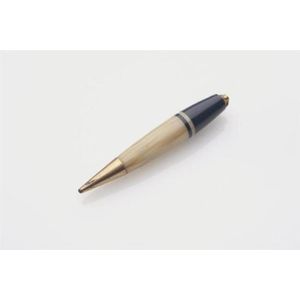
Navy and Ivory Bakelite Propelling Pencil - 7 cm
A Navy and ivory Bakelite propelling pencil, length 7 cm
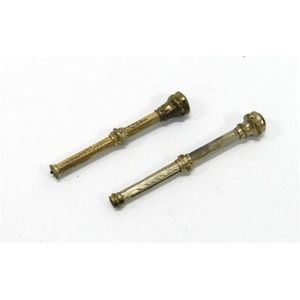
Miniature Telescopic Pencils with Gemstone Seals
Two miniature telescopic pencils with an amethyst and garnet seal top, length 4 cm and 5 cm

Victorian Propelling Pencils with Seal and Watch Key
Two Victorian fancy propelling pencils, with small seal and seal/pocket watch key

Miniature Amethyst Seal Top Telescopic Pencil (4cm)
A miniature seal top telescopic pencil, amethyst inset, 4 cm long
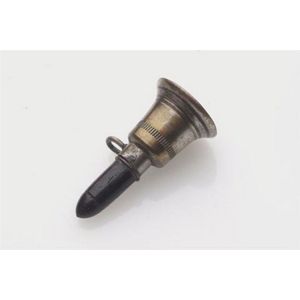
Telescopic Ship Bell Pencil - Novelty Stationery Item
A novelty telescopic pencil in the form of a ship's bell, 3.5 cm long
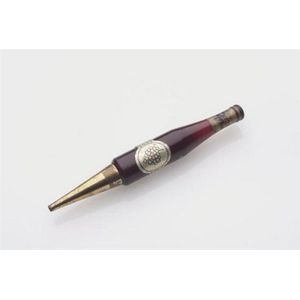
Wine Bottle Propelling Pencil - Novelty Stationery
A novelty propelling pencil in the form of a wine bottle, 7.5 cm long

Dumbbell Pencil with Cover: Compact and Fun Writing Tool
A novelty pencil with cover, in the style of a dumbbell, 5 cm long

Dual Telescopic Pencil: Unusual Twin Design, 9cm Long
An unusual twin side by side dual telescopic pencil, 9 cm long

Telescopic Bone Pencil: Compact and Sleek
A telescopic pencil, bone body, of plain circular form, 9 cm long
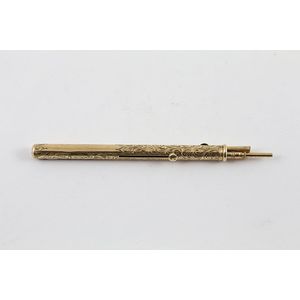
Engraved 9ct Propelling Pencil with Dip-Pen and Knife
All 9ct engraved propelling pencil with dip-pen slide and knife

Vintage Felix & Mini Mouse Pencil Case Set
A vintage wooden Felix the cat figure & a Mini Mouse pencil cylinder, sponsored by Commonwealth Bank, includes contents of pencil case and catalogue of Reclaiming Felix the cat state library of NSW, height 21 cm
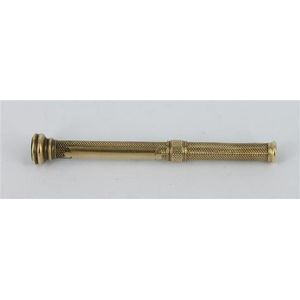
Bloodstone-sealed Rolled-Gold Propelling Pencil
A rolled-gold propelling pencil with bloodstone seal.
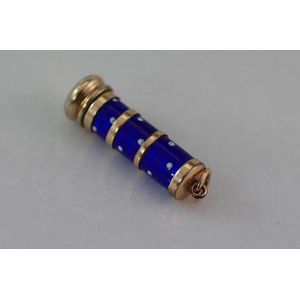
Blue Enamel Victorian Fob Propelling Pencil
Victorian fob propelling pencil with blue enamel, approx 3.5 cm (closed) including bale
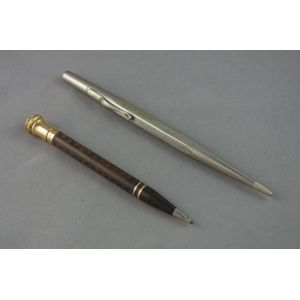
Vintage Propelling Pencils: Eversharp USA & Life Long
Two vintage propelling pencils, 'Eversharp USA' & 'Life long'
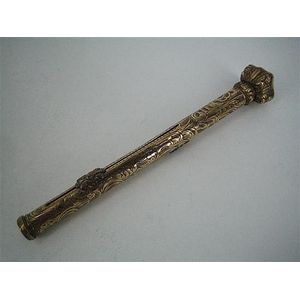
Victorian Bloodstone Pencil with Gold Casing and Engraving
A Victorian gold-cased pencil, engraved and with bloodstone end-stone









 Loading more...
Loading more...